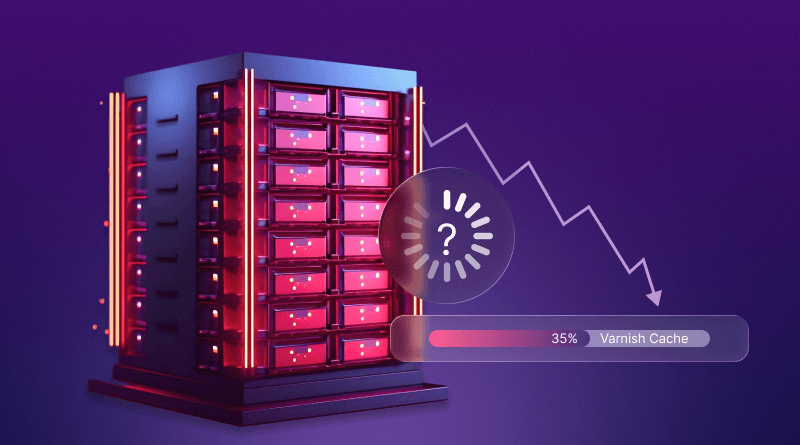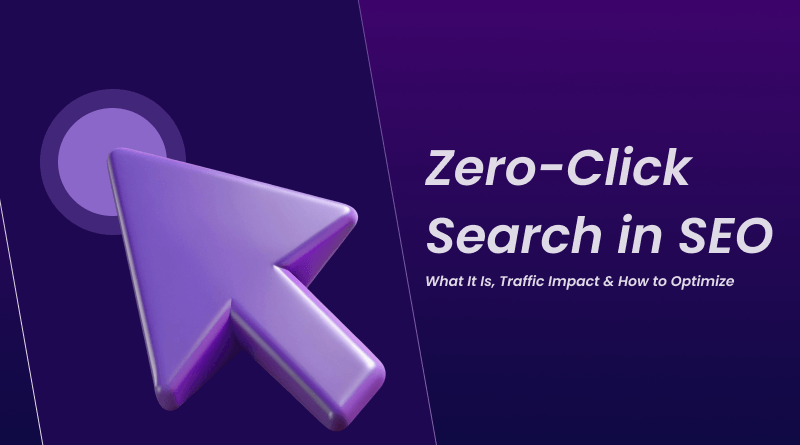
Your server crashed at midnight. Not from a DDoS attack, a coding error or a hosting failure, but because 5,000 people tried to open the same product page at the same time, something a Varnish Cache server could have handled easily.
With no Varnish, your server rebuilt that page 5,000 times. It generated fresh HTML, ran database queries and fetched the same assets repeatedly. Each request treated the page as if it had never existed before.
Under normal traffic, this waste goes unnoticed. But the moment your site gets featured, launches a campaign, or grows in popularity, this repetition becomes a bottleneck.
That is exactly the problem Varnish Cache solves. Instead of rebuilding identical pages, Varnish stores them in lightning-fast memory and serves them instantly, eliminating repeated work, wasted resources, and stress on your backend.
The end result: dramatically faster pages, stable servers and infrastructure that scales effortlessly.
In this guide, you’ll learn how Varnish Cache works, how it sits between your visitors and your web server and why it’s essential for high-traffic websites in 2026.
What Is Varnish Cache? (And Why It’s Different from Regular Caching)
Varnish Cache is an open‑source reverse proxy that sits in front of your web server. Think of it as a smart middle layer between your visitors and the actual application. It keeps copies of frequently requested pages and files in memory and serves them directly when multiple requests of the same type are made.
Because these responses come straight from RAM rather than from your backend and database, they are delivered much faster.
A few things that make Varnish different from “usual” caching:
- It is built specifically for HTTP traffic, so it’s a good fit for modern websites and APIs.
- It focuses on being a high‑performance accelerator rather than a general‑purpose web server.
- It is flexible: behaviour is controlled through VCL (Varnish Configuration Language), so you can define detailed rules for when/what to cache and when to bypass cache.
By reducing the time it takes to fetch content, Varnish improves load times and makes your site much faster for end users.
How Varnish Intercepts Requests Before They Hit Your Server
Cached content
- When someone visits a page for the first time, Varnish forwards the request to your origin server.
- The server builds the response as usual; Varnish then stores a copy in memory.
- When another user requests the same page, Varnish serves the cached copy.
This simple cycle eliminates much of the repetitive work in the backend and dramatically reduces response times for popular, busy pages.
Reverse proxy role
Varnish receives all incoming HTTP requests first:
- If it already has a valid cached copy, it responds immediately.
- If not, it forwards the request to the web server and stores the response for next time.
Because of this reverse proxy setup, your backend handles only requests that require dynamic processing.
Reduced server load
Over time, a large part of your traffic is served from cache, leading to:
- Fewer database queries
- Less PHP/Node/.NET processing
- Lower CPU and disk usage on the origin server
This helps extend the life of your current infrastructure and keeps your site steady even during busy periods.
4 Ways Varnish Reduces Server Load Without Hardware Upgrades
Faster page loads
- Popular pages are retrieved from memory rather than regenerated each time.
- Visitors see pages load quickly, which keeps them on the site longer and boosts conversion rates.
Better scalability
- Varnish is designed to handle many concurrent requests.
- When traffic spikes, Varnish absorbs a good chunk of it, so your origin server doesn’t immediately hit its limits.
- This is especially useful for campaigns, product launches and seasonal peaks.
Lower latency
- Because cached responses skip multiple steps (database, application logic, file system), the delay between the request and the response is much shorter.
- This is noticeable for users on slower connections and mobile devices.
Cost efficiency
- Less backend load means fewer CPU and RAM upgrades in the short term.
- You can often handle significantly more traffic on the same hardware simply by adding Varnish as a caching layer.
How to Install Varnish Cache in 4 Steps (Ubuntu/Debian & CentOS)
1. Installation
Varnish runs on most Linux and Unix‑like systems. The basic flow is:
- Install the package from your distro’s repository (for example, apt install varnish on Ubuntu/Debian or yum install varnish on CentOS/RHEL).
- Enable and start the Varnish service.
2. Configuration (default.vcl)
The core behaviour is controlled by default.vcl:
- Define your backend (the origin server), usually pointing to Apache, Nginx or another web server.
- Add rules for which URLs or file types should be cached, and for how long.
- Optionally exclude sensitive areas such as logins, carts, and user dashboards.
VCL looks a little like a scripting language, but is easy enough to understand once you observe a few examples.
3. Integration with your web server
A typical layout is:
- Varnish listens on port 80 (the public HTTP port).
- Your web server listens on another port, such as 8080.
- Varnish forwards cache misses to the web server, receives responses and caches them when allowed.
This way, all normal traffic flows through Varnish, while your web server only deals with the work Varnish can’t handle from cache.
4. Testing and tuning
After setup:
- Check that your pages load normally and that dynamic areas (such as the checkout process) function correctly.
- Use tools such as varnishstat and varnishlog to see cache hit/miss rates and spot problems.
- Adjust rules over time as you learn which content should be cached more or less aggressively.
4 Critical Varnish Mistakes (And How to Avoid Them)
Use cache‑control headers wisely
- Set appropriate TTL (time-to-live) values for different content types.
- Static assets like images, CSS and JS can often be cached for hours or days.
- Frequently changing pages should have shorter lifetimes.
Keep dynamic content out of cache
- Don’t cache pages that depend on user identity or real‑time data (carts, checkouts, dashboards, etc.).
- Use VCL rules and headers to skip cache when cookies or authentication are present.
Watch performance over time
- Regularly monitor cache hits, backend response times, and memory usage.
- If hit rates are low, review your rules to see if too much traffic is bypassing the cache.
- Log and review 503 errors so misconfigured routes can be fixed quickly.
Varnish Cache and AI‑Driven Websites
AI‑driven sites and apps often mix heavy, real‑time processing with static content such as images, layouts, and script bundles. Running everything directly through the application server can quickly slow things down.
Varnish helps by:
- Serving static pieces of the interface directly from cache.
- Reducing the number of repeated requests to AI backends or APIs.
- Freeing server resources so machine‑learning models and inference workloads get the CPU and memory they need.
The result is a smoother user experience, even when complex AI features run in the background.
Conclusion
Varnish Cache is more than a basic caching tool. It’s a serious performance layer that can change how your site behaves under load. By keeping frequently requested content in memory and sitting in front of your web server as a reverse proxy.
If your goals include improving speed, surviving traffic spikes, or getting more out of existing hardware, Varnish is worth the effort to set up and tune.
For more ideas on improving overall performance, you can connect this article to your wider content – for example, internal links to website‑speed guides or hosting optimization posts on your own blog.
FAQs
Varnish reduces the number of times your web server has to build the same page. It keeps a copy in memory and serves it to subsequent visitors, making pages feel much faster and reducing backend load.
Yes. The core project is open-source under a BSD-style licence, so you can install and use it without paying a licence fee. There are commercial offerings, such as Varnish Enterprise, that add additional features and support for larger teams.
Common reasons include: responses marked as non-cacheable, cookies that force Varnish to bypass the cache, very low cache-control TTLs, or insufficient RAM allocated to Varnish. Checking headers and hit rates with varnishstat or varnishlog will usually point you to the cause.
Yes, many high-traffic WordPress and WooCommerce sites use Varnish in front of their web servers. The key is to exclude sensitive areas like logins and carts from cache and to work with a host that knows how to tune Varnish for these platforms.
VCL (Varnish Configuration Language) is a small, domain-specific language used to control Varnish. It lets you define rules for caching, purging, and routing requests. Under the hood, VCL is compiled to C, keeping it fast while remaining flexible to work with.
On most distributions, you install the package from the system repository, enable the service, point Varnish at your backend server by default.vcl, then move your web server to another port and let Varnish listen on port 80. The exact commands differ slightly between Ubuntu/Debian and CentOS/RHEL, but the steps are the same.
Most setups use HTTP PURGE or BAN requests and expose a restricted endpoint for that. You send a request targeting a single URL or a pattern, and Varnish removes matching objects from the cache so the next visitor gets a fresh version from your backend.














